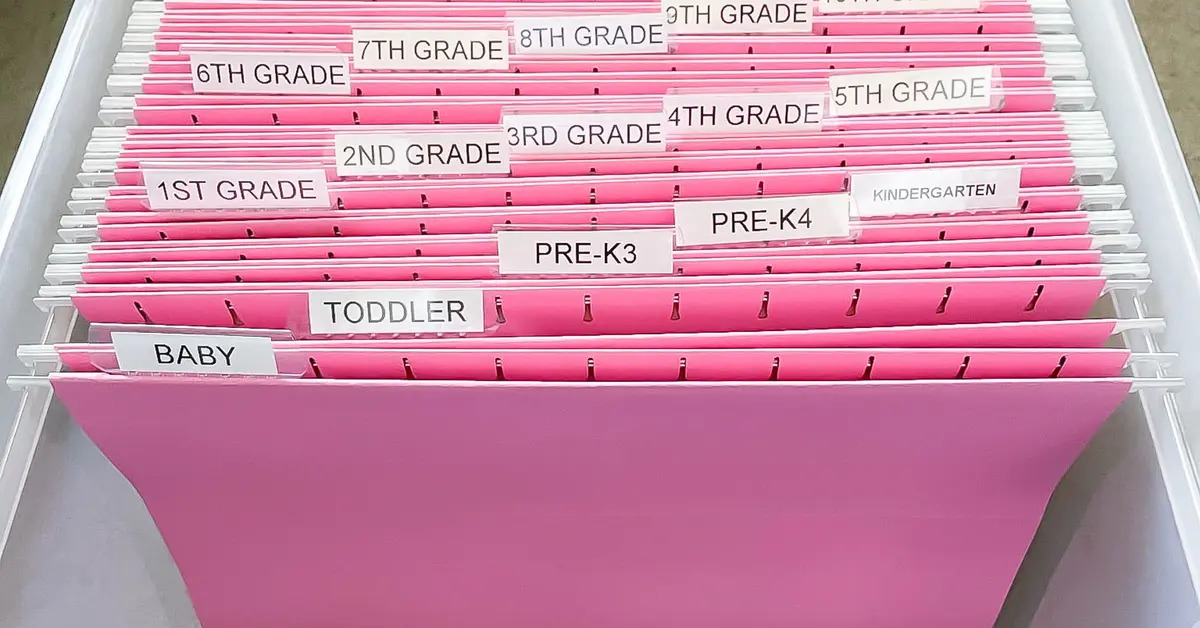Home>diy>Building & Construction>What Is Tender Document In Construction


Building & Construction
What Is Tender Document In Construction
Modified: December 7, 2023
Learn what a tender document is in the context of building construction and how it plays a crucial role in the bidding process. Gain insights into its components and significance.
(Many of the links in this article redirect to a specific reviewed product. Your purchase of these products through affiliate links helps to generate commission for Storables.com, at no extra cost. Learn more)
Introduction
Welcome to the world of construction, where buildings rise high, bridges span wide, and infrastructure shapes the world around us. In the construction industry, every project begins with a vision, a blueprint, and a plan. However, before any spade hits the ground, there is a vital document that sets the groundwork for the entire project – the tender document.
The tender document is a comprehensive package of information that outlines the requirements, specifications, terms, and conditions of a construction project. It is a formal invitation to contractors and construction companies to submit their bids for the project. This document plays a crucial role in ensuring transparency, fairness, and competition in the construction industry.
In this article, we will delve into the intricacies of tender documents in construction, exploring their definition, importance, components, content, preparation, submission, and evaluation. So, let us embark on this journey to understand the significance of tender documents in the realm of construction.
Key Takeaways:
- Tender documents are crucial in construction, ensuring fairness, transparency, and accurate bidding. They define project requirements, establish a legal framework, and encourage innovation, ultimately leading to successful project execution.
- The components of a tender document, such as project overview, scope of work, and evaluation criteria, provide a comprehensive framework for bidders to understand and respond to project requirements. Careful preparation and submission of tender documents increase the chances of securing contracts and delivering successful projects.
Read more: What Is A Tender Process In Construction?
Definition of Tender Document
A tender document, also known as a bid document or a request for proposal (RFP), is a formal document that provides detailed information about a construction project and invites bids from contractors and construction companies. It serves as a crucial tool in the procurement process, facilitating fair competition and ensuring transparency in the selection of a contractor.
The tender document typically includes information such as project scope, specifications, technical requirements, terms and conditions, and the evaluation criteria. It provides potential bidders with all the necessary details they need to understand the project and prepare their bids accordingly.
Moreover, the tender document establishes a legal framework between the client or project owner and the bidders. It outlines the responsibilities, obligations, and rights of both parties throughout the procurement process. By clearly defining the rules and expectations, the tender document ensures a level playing field and avoids any ambiguity or misunderstandings.
It is important to note that the tender document varies in complexity and length depending on the size and nature of the construction project. For smaller projects, the document may be relatively concise, whereas for larger projects, it can be extensive and cover multiple sections.
The tender document acts as a crucial communication tool between the client and bidders. It provides a platform for the exchange of information, clarifications, and queries throughout the bidding process. This ensures that all bidders have access to the same information and that any modifications or amendments are communicated to all interested parties in a fair and transparent manner.
Overall, the tender document sets the foundation for the procurement process, guiding both the client and the bidders through the various stages, from the initial bidding phase to the final contract award. It plays a pivotal role in establishing a transparent and competitive environment, enabling the selection of the most qualified and capable contractor for the project.
Importance of Tender Document in Construction
The tender document holds immense importance in the world of construction. It serves as a crucial document that ensures fairness, transparency, and efficiency in the procurement process. Let’s delve into why the tender document is so vital:
- Defines Project Requirements: The tender document clearly outlines the scope, specifications, and technical requirements of the construction project. It serves as a reference point for all potential bidders, enabling them to understand the project’s objectives, deliverables, and expectations.
- Promotes Fair Competition: By providing detailed information about the project, the tender document promotes fair competition among bidders. It ensures that all interested parties have access to the same information and can prepare their bids accordingly. This fosters a level playing field, where contractors are assessed based on their capabilities, expertise, and proposed solutions.
- Ensures Transparency: Transparency is fundamental in the procurement process. The tender document ensures that all bidders are aware of the evaluation criteria, terms, and conditions, eliminating any ambiguity or favoritism. This transparency helps in building trust between the client and bidders and enhances the credibility of the selection process.
- Facilitates Accurate Bids: The detailed information provided in the tender document helps potential bidders in accurately estimating the costs and resources required for the project. This ensures that their bids are realistic and align with the project’s budget and timeframe. Accurate bids lead to better project planning and minimize the risk of cost overruns or delays.
- Establishes Legal Framework: The tender document serves as a legally binding agreement between the client and the bidders. It outlines the rights, responsibilities, and obligations of both parties throughout the procurement process. This helps in avoiding disputes and provides a clear framework for the execution of the project once the contract is awarded.
- Encourages Innovation: Through the tender document, clients can specify any desired innovative solutions or technologies they want to incorporate into the project. This encourages bidders to propose creative ideas or approaches, leading to advancements and improvements in the construction industry.
- Minimizes Project Risks: By clearly defining project requirements, specifications, and evaluation criteria, the tender document reduces the risk of misunderstandings, ambiguities, and discrepancies. This increases the likelihood of selecting a contractor who can meet the project’s objectives and deliver high-quality results within the specified constraints.
- Provides a Basis for Comparison: With all bidders submitting their proposals based on the information provided in the tender document, it becomes easier for the client to compare and evaluate different bids. This allows them to assess each bidder’s strengths, weaknesses, and suitability for the project, helping in the selection of the most qualified contractor.
In summary, the tender document is of paramount importance in the construction industry. It sets the stage for fair competition, transparency, accurate bidding, and successful project execution. It serves as a valuable tool for both clients and contractors, ensuring that construction projects are carried out efficiently and effectively.
Components of a Tender Document
A tender document comprises several key components that provide a comprehensive overview of the construction project and the requirements for potential bidders. These components include:
- Project Overview: This section provides a brief description of the project, including its objectives, purpose, and desired outcomes. It gives bidders an understanding of the project’s context and its significance in the overall construction landscape.
- Scope of Work: The scope of work defines the tasks, activities, and deliverables that need to be completed for the successful execution of the project. It outlines the specific work required for each phase or milestone, providing clarity on the project’s timeline and expectations.
- Technical Specifications: Technical specifications detail the specific materials, methodologies, and quality standards that must be adhered to during the construction process. It includes information such as construction techniques, engineering standards, safety regulations, and any industry-specific requirements that need to be followed.
- Bill of Quantities (BOQ): The BOQ is a comprehensive list of all the materials, quantities, and costs associated with the project. It provides a detailed breakdown of the various items required for construction, including labor, equipment, and materials. The BOQ helps bidders in accurately estimating the project’s costs and preparing their bids accordingly.
- Contract Terms and Conditions: This section outlines the legal and contractual requirements that bidders must agree to if they are awarded the contract. It covers aspects such as payment terms, project duration, insurance requirements, warranty provisions, and dispute resolution mechanisms. Clear and fair contract terms and conditions help protect the interests of both parties and minimize the risk of misunderstandings or disputes.
- Evaluation Criteria: The evaluation criteria define the factors on which the submitted bids will be assessed. It includes both technical and financial criteria, such as experience and qualifications of the bidder, proposed methodology, track record of delivering similar projects, and the cost of the bid. Bidders need to align their proposals with the specified evaluation criteria to enhance their chances of being selected.
- Submission Guidelines: This section provides instructions on how bidders should prepare and submit their proposals. It includes information on the required format, the deadline for submission, any specific documentation or certifications needed, and the method of submission (e.g., physical or electronic submission).
- Drawings and Specifications: Drawings and specifications are graphical representations that provide additional details about the project’s design, layout, and dimensions. They include architectural drawings, structural plans, electrical layouts, and any other relevant technical drawings that offer a visual understanding of the project.
- Appendices and Supporting Documents: Appendices and supporting documents may be included in the tender document to provide additional information or clarifications. These can include sample contracts, reference letters, licenses, permits, or any other documents that are relevant to the project or the bidding process.
These components work together to provide potential bidders with a comprehensive understanding of the project, its requirements, and the evaluation criteria. The tender document serves as a guide for bidders to prepare and submit their proposals in a structured and consistent manner.
A tender document in construction is a set of documents that outlines the requirements for a construction project, including the scope of work, specifications, and terms and conditions. It is used to solicit bids from contractors and suppliers.
Content of a Tender Document
A tender document contains various sections and information that aid in providing a comprehensive overview of the construction project and its requirements. The content may vary depending on the specific project and client’s preferences, but generally, the following elements are included:
- Cover Page: The cover page of a tender document typically includes the name of the client or project owner, the project title, and the tender’s reference number. It sets the tone for the document and provides a professional and organized appearance.
- Table of Contents: The table of contents provides a clear outline of the various sections and subsections within the tender document. It allows bidders to easily navigate through the document, ensuring they can locate specific information quickly.
- Introduction: The introduction section provides a brief overview of the project, its objectives, and its significance. It sets the context and captures the attention of potential bidders, highlighting the project’s potential benefits and opportunities.
- Project Description: This section delves deeper into the project, providing detailed information on its scope, purpose, and goals. It includes a comprehensive description of the project’s requirements, deliverables, and any specific challenges or constraints that bidders need to be aware of.
- Technical Specifications: The technical specifications section outlines the specific requirements and standards that need to be met during the construction process. It includes details such as materials, equipment, methodologies, and any industry-specific regulations or certifications that must be adhered to.
- Scope of Work: The scope of work section defines the specific tasks, activities, and deliverables that need to be undertaken for the successful completion of the project. It provides clarity on the project’s timeline, milestones, and expectations, enabling bidders to understand the scope of their responsibilities.
- Tender Process: This section explains the procedures and steps involved in the tender process. It includes information on how bidders can obtain the tender document, any pre-bid meetings or site visits, the deadline for submission, and the evaluation and award process.
- Contract Terms and Conditions: The contract terms and conditions section outlines the legal and contractual requirements that bidders must adhere to if they are awarded the contract. It covers aspects such as payment terms, project duration, intellectual property rights, insurance requirements, and dispute resolution mechanisms.
- Evaluation Criteria: The evaluation criteria outline the factors on which the submitted bids will be assessed. It includes both technical and financial criteria, such as experience, qualifications, proposed methodology, project schedule, and the cost of the bid. Clear evaluation criteria help bidders tailor their proposals to meet the client’s specific expectations.
- Submission Requirements: This section provides instructions on how bidders should format and submit their proposals. It includes details on the required documentation, the format for submission (electronic or physical), any specific labeling or packaging requirements, and the deadline for submission.
- Appendices and Attachments: The tender document may include appendices or attachments that provide additional information or supporting documents. These can include drawings, specifications, sample contracts, reference letters, licenses, permits, or any other relevant documents that aid in understanding the project or the bidding process.
By including these sections and information in the tender document, the client ensures that potential bidders have access to all the necessary details to prepare their proposals accurately and in line with the project’s requirements.
Read more: What Is Tender In Construction Industry
Preparation and Submission of Tender Documents
The preparation and submission of tender documents is a crucial step in the construction procurement process. Here are the key components involved in this process:
- Gather Information: The first step is to gather all the necessary information related to the project. This includes the tender document provided by the client, project specifications, drawings, BOQs, and any additional documentation or requirements mentioned in the tender document. It is essential to thoroughly review and understand all the information before proceeding.
- Cost Estimation: Bidders need to carefully estimate the project’s costs based on the given information. This involves breaking down the requirements, analyzing the materials, labor, equipment, and other associated costs. Accurate cost estimation plays a vital role in preparing a competitive and realistic bid.
- Develop Proposal: Utilizing the gathered information, bidders develop a detailed proposal that outlines how they plan to execute the project. This includes describing the project approach, methodologies, project schedule, and any value-added services that differentiate their bid from competitors. The proposal should align with the tender document’s requirements and clearly address the evaluation criteria.
- Comply with Formatting and Documentation Requirements: Bidders must carefully adhere to the formatting and documentation requirements outlined in the tender document. This includes using the specified format for the proposal, organizing the document in a clear and logical manner, and including any required supporting documents or certificates.
- Proofread and Review: Before finalizing the tender document, it is crucial to review the proposal for any spelling or grammatical errors, inconsistencies, or omissions. Proofreading ensures that the proposal is professional, error-free, and effectively communicates the bidder’s capabilities and understanding of the project.
- Submit the Tender Document: Bidders need to carefully follow the instructions provided in the tender document for submitting their proposals. This includes ensuring all required documents are included, using the specified method of submission (physical or electronic), and meeting the submission deadline. Late submissions are typically not accepted.
- Attend Pre-Bid Meetings or Site Visits: Depending on the project requirements, bidders may be required to attend pre-bid meetings or site visits. These events provide an opportunity to gather additional information, seek clarifications, and better understand the project scope, site conditions, and any potential challenges or constraints.
- Maintain Communication: Throughout the tendering process, it is important for bidders to maintain open communication with the client. This includes promptly seeking any clarifications or additional information, addressing any concerns, and submitting any requisite documents or amendments requested by the client.
By carefully preparing and submitting the tender document, bidders increase their chances of being selected for the construction project. It is essential to ensure that the proposal highlights the bidder’s expertise, understanding of the project requirements, and their commitment to delivering high-quality results within the specified constraints.
Evaluation of Tender Documents
The evaluation of tender documents is a crucial process that allows the client or project owner to assess and compare the submitted bids. Here are the key steps involved in the evaluation process:
- Evaluation Criteria: Before evaluating the tender documents, the client establishes clear evaluation criteria based on the project requirements and priorities. This criteria may include factors such as experience, qualifications, proposed methodology, project schedule, and the cost of the bid.
- Preliminary Assessment: The client initiates the evaluation process by conducting a preliminary assessment of the tender documents. This involves reviewing each bid to ensure it is complete, meets the specified requirements, and is submitted within the set deadline. Any bids that do not meet these criteria may be disqualified.
- Technical Evaluation: The technical evaluation involves assessing each bidder’s technical capabilities and methodology proposed in their tender document. This includes reviewing their experience, qualifications, track record, and the feasibility and appropriateness of their proposed approach in meeting the project requirements.
- Financial Evaluation: The financial evaluation focuses on assessing the cost aspect of each bid. This includes comparing the proposed prices with the project’s budget and evaluating the reasonableness and competitiveness of the proposed costs. It also involves analyzing any additional costs or contingencies mentioned in the tender documents.
- Qualitative Evaluation: In addition to technical and financial aspects, the evaluation may include qualitative factors such as references, client testimonials, and the overall impression of the bid and its alignment with the project goals. This allows the client to judge the bidder’s professionalism, communication skills, and their understanding of the project scope and objectives.
- Shortlisting or Negotiation Phase: Based on the evaluation, the client may shortlist a few bidders who meet the evaluation criteria and invite them for further discussions or negotiations. This allows the client to seek clarifications, request modifications or amendments, and negotiate terms before finalizing the selection of the preferred bidder.
- Contract Award: Once the evaluation process is complete, the client makes the final decision on the contract award. This decision is based on a combination of technical, financial, and qualitative evaluations. The selected bidder is notified, and the contract negotiation and finalization process can begin.
- Communication with Bidders: Throughout the evaluation process, it is important for the client to maintain open and transparent communication with all bidders. This includes providing timely updates, communicating any modifications or clarifications required, and ensuring that all bidders are treated fairly and consistently.
The evaluation of tender documents is a critical step in ensuring the selection of the most qualified and capable bidder for the construction project. It allows the client to thoroughly assess each proposal, consider all relevant factors, and make an informed decision that aligns with the project’s objectives and requirements.
Conclusion
Tender documents play a vital role in the construction industry, serving as a key instrument for procuring construction services. These comprehensive documents provide a clear roadmap for the project and facilitate fair competition among bidders. Through tender documents, clients can communicate their project requirements, specifications, and evaluation criteria to potential contractors.
The importance of tender documents cannot be overstated. They promote transparency, establish a level playing field, and ensure that the selection process is based on merit. By providing detailed information about the project, tender documents allow bidders to accurately estimate costs, prepare competitive proposals, and showcase their expertise and capabilities.
The components of a tender document, such as project descriptions, technical specifications, scope of work, and evaluation criteria, provide a comprehensive framework for bidders to understand and respond to the project requirements. Each section contributes to the overall clarity and fairness of the tendering process.
The preparation and submission of tender documents require careful attention to detail. Bidders must gather all necessary information, estimate project costs accurately, develop a strong proposal that aligns with the requirements, and comply with formatting and submission guidelines. By taking these steps, bidders increase their chances of securing the contract and successfully delivering the project.
The evaluation of tender documents is an important process that allows clients to select the most qualified bidder for the project. This involves assessing the technical and financial aspects of each bid, considering qualitative factors, and engaging in further discussions or negotiations with shortlisted bidders. The ultimate goal is to choose the bidder that offers the best value and meets the project’s objectives.
In conclusion, tender documents are the cornerstone of the construction industry, promoting fair competition, transparency, and efficiency in the procurement process. They provide a structured framework for clients and bidders to interact, ensuring that construction projects start on the right foot and are executed successfully. By emphasizing the importance of tender documents and understanding their components, construction projects can be carried out in a transparent, competitive, and efficient manner.
Frequently Asked Questions about What Is Tender Document In Construction
Was this page helpful?
At Storables.com, we guarantee accurate and reliable information. Our content, validated by Expert Board Contributors, is crafted following stringent Editorial Policies. We're committed to providing you with well-researched, expert-backed insights for all your informational needs.















0 thoughts on “What Is Tender Document In Construction”